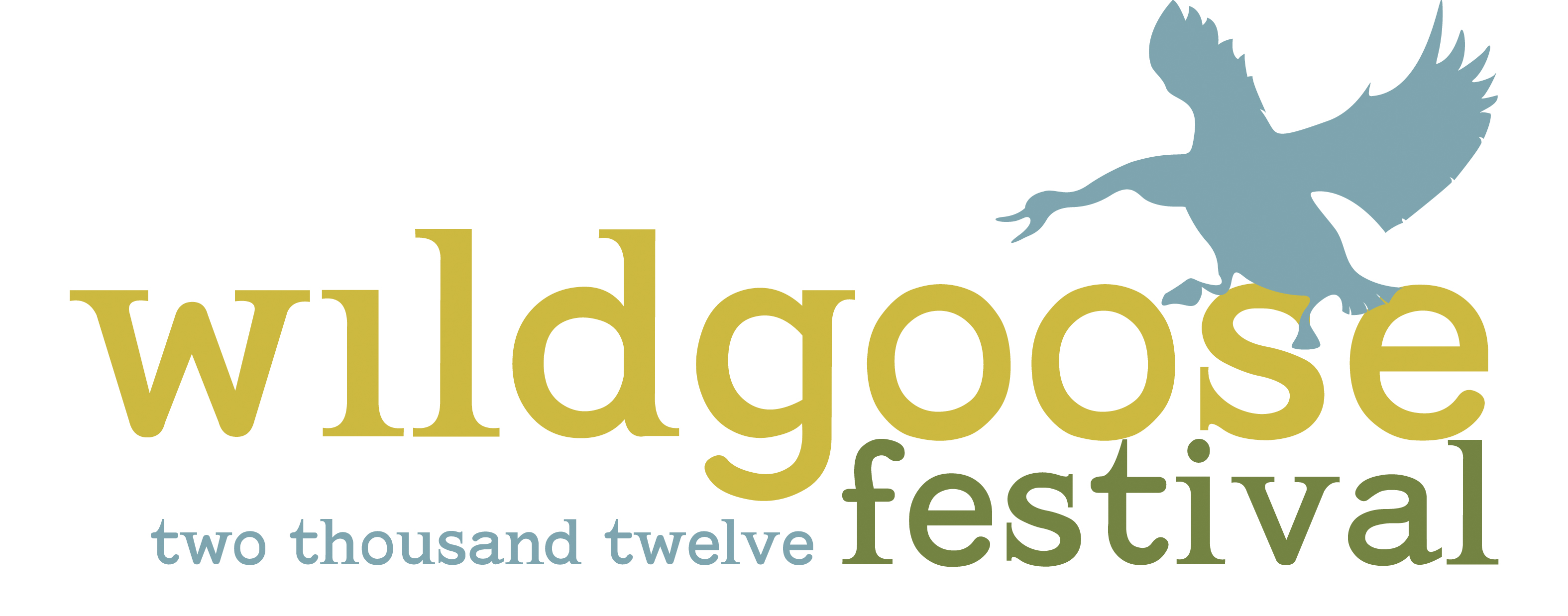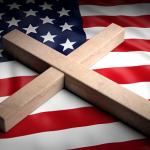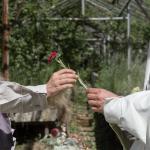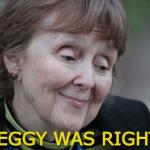As Wild Goose 2012 approaches, this blog will attempt to capture the festival from the viewpoints of those who participate in it. From today’s comments by board member Karla Yaconelli to highlights shared by volunteer leaders, performers, attenders and friends, you’ll see how the Goose connects with a variety of people in a variety of ways.
**If you’d like to share your experience with Wild Goose, please email sarah (at) wildgoosefestival (dot) org.**
Q: Take us back. How was the idea for the Wild Goose festival conceived?
Karla: My late husband and I began attending the Greenbelt Festival (England) in the mid-80s. From the very first time we went, we began to dream of a similar festival getting started in the USA. Although at that time, we quickly discerned that the U.S. wasn’t ready for a festival of this kind … yet. Over the next ten to fifteen years, as more artists and speakers from the U.S.were invited to Greenbelt, numerous others began having similar dreams and longings. Various groups of people began to meet and discuss the possibility. Sometime in the late 90’s, those discussions led my husband and I to look at starting the festival under the umbrella of our organization, Youth Specialties. But after a number of meetings we reluctantly and disappointedly decided that our organization wasn’t the right vehicle.
In hindsight, I’m really grateful that we (or any other organization) didn’t take it on because I’ve realized that it’s much better for the Wild Goose to NOT be under the auspices of ANY established organization but rather that it become an entity of its own that is collectively “owned” by “the flock.”
Discussions among others continued throughout the 90’s. I actually don’t know all of the people in the U.S. who have talked about starting a festival similar to Greenbelt, but I understand there are quite a few of us! In the early 2000’s, Sojourners (Jim Wallis’ organization) went so far as to help get funding for a feasibility study and business plan (shepherded by Robin Fillmore), out of which the name Wild Goose was conceived (from a paper mache Wild Goose that hangs in Doug Pagitt’s church, Solomon’s Porch, in Minneapolis).
But without an organized and dedicted driving force, the idea of a U.S. festival continued to flounder, bouncing around among several groups of people but never achieving lift off. Around 5 years ago, Mike King, who had been part of many of the pockets of discussion around the country, summoned a group of approximately 25 of us together. Out of that gathering, four of us (Mike, myself, Ian Cron, and Robin Fillmore) decided there’d been too much talk and “possibility thinking.” We were ready to take on the no-holds-barred committment of finding money and making it happen and we appointed ourselves as the “founding board.” We expected some pushback from other groups who’d come together with similar goals, but instead found incredible support.
We hired a director and targeted the first festival for June, 2010 at Youth Front’s property near Kansas City, but The Wild Goose had a mind of her own. We sadly lost one board member, Robin Fillmore (although she is still considered a board member emeritus and welcome to rejoin us anytime!) and happily gained two new ones, Joy Carrol Wallis and Melvin Bray. Under the leadership of our second Executive Director, Gareth Higgins, a new location and date and a WHOLE lot of other things were established. Through the generosity and support of a couple of major benefactors, tremendous assistance from the Greenbelt folk, and after nearly 25 years of many people dreaming about it and longing for it, the inaugural Wild Goose Festival was launched at Shakori Hills, NC in June 2011.
Q: As a board member, what is your longterm vision/hope for the festival?
Karla: Our dreams and goals are lofty and altruistic, to be sure. My personal hope and prayer is that the Wild Goose Festival will be nothing short of culture changing–certainly that means the Christian culture, but also every aspect of North American culture: political, social, economic, spiritual, environmental,eccumenical, missional, artistic, you name it. Of course, ultimately, we hope to transform and heal the world, but we know that begins with us individually, then plays out to our communities, nation and eventually the world. We want to embody and inspire authenticity and genuine love of neighbor, as well as radical inclusivity, social justice, care of the earth, awe of beauty and the arts, inner peace, and the reduction of violence and destruction of every form.
Q: Last year was Wild Goose’s debut year. Can you describe the atmosphere for us?
Karla: First and foremost, there was an atmosphere of celebration–a party, if you will–a celebration of God, of beauty, of our lives, our diversity and of one another. There was an energy that was palpable, that took your breath away. In fact, I cried every time I walked onto the grounds. It was THAT tangible. The typical heirarchies of speakers/artists vs. attendees were collapsed. Everyone was accessible and living as equals in community. Everywhere you looked, people were laughing together, talking deeply together, eating together, praying together, singing and dancing together. It was truly a “thin place” where the veil between heaven and earth was made of gossamer.
Q: Can you describe the event site for those who haven’t been there?
Karla: Shakori Hills is spectacularly gorgeous–wild, woodsy, and green. It’s the perfect size for this event (for now, anyway!), and it’s an established festival site, which means it came with an infrastructure that kept us from having to “build the city” from the ground up. The Shakori Hills people were such an asset to our fledgling group who’d never put on a festival before. We owe them a huge debt of gratitude. HOWEVER, I cannot lie, in June it’s typically VERY hot and humid and there are lots of bugs. LOTS. That’sthe only downside, but with abundant creativity (programming, shade, and water), it proved to not be insurmountable, and there are plans afoot to make this aspect of the location even more tolerable for the 2012 festival.
Q: Give us the highlights of last year’s festival for you.
Karla: In terms of the festival itself, there were WAY too many highlights for me to try and call out only a few. For me, though, the biggest highlight of all is that it actually happened. By the grace of God, a tiny but incredible staff, an army of amazing volunteers and speakers and artists who believed in it enough that they came at their own expense, we actually pulled it off. I still can’t quite believe it. I’m still pinching myself.
Q: What are you looking forward to this year?
Karla: I’m looking forward to EVERYTHING. There was so much going on last year that it wasn’t possible to take it all in. Personally, I’m very excited simply to be with my “tribe”again–seeing old friends, making new ones, plotting and working together to bring transformation to our world, celebrating, laughing and talking long into the night, being inspired and challenged. In terms of a party, a festival, it doesn’t get any better than that, does it? Oh, and I’m also personally looking forward to more theatre and dance.
Q: How do you see justice and spirituality manifest itself at the festival?
Karla: As I alluded to earlier, the embodiment of this begins first and foremost with ourselves and with how we treat one another. At the 2011 festival, the spirit of community, collaboration, inclusivity and acceptance was a HUGE manifestation of justice and spirituality. There were 1,700 people togetherin the middle of the woods. We didn’t all think or believe the same things–theologically, politically, socially or otherwise–yet the atmosphere was one of genuine respect and deep listening to one another, devoid of judgmentalism. There were no altercations. Albeit small in terms of the number of people on the globe, it was nonetheless a tremendous start to working together toward a more just and holy world.














